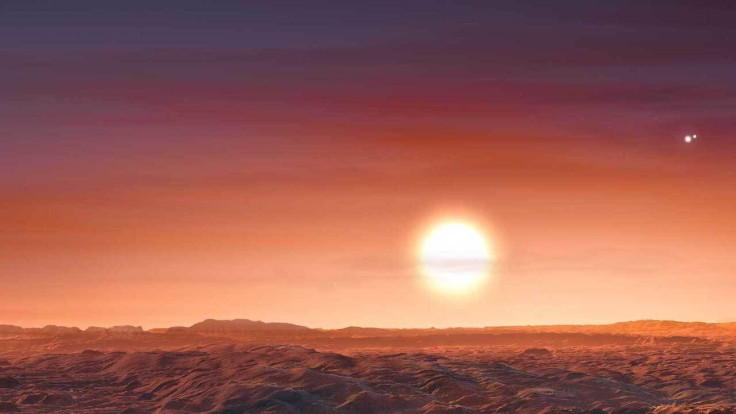NASA Discovers Planet Inspired By 'Star Wars' Tatooine But With Three Suns

NASA has discovered a new exoplanet that bears a striking resemblance to the fictional desert planet Tatooine featured in the “Star Wars” film franchise. But, unlike in the movies, the exoplanet has three suns.
The new exoplanet NASA discovered is called LTT 1445 AB and is located about 22 light-years from Earth. It was spotted by a team from the Harvard Center for Astrophysics using the TESS space telescope.
According to the space agency, the planet has a rocky surface and closely orbits a host star. In fact, the planet only takes about five days to go around its sun.
Due to its close proximity to its host star, temperatures in the planet are very high and can reach up to 320 degrees Fahrenheit, which is like being inside a pre-heated oven.
However, LTT 1445 AB’s host star isn’t the only sun that can be viewed from the planet. According to NASA, the exoplanet’s sun orbits two other stars that are locked around each other. As a result, a total of three suns can be seen from the planet.
This is somewhat similar to the view from Tatooine, the fictional home planet of Luke and Anakin Skywalker in “Star Wars.” Shots of a binary sunset over the horizon in the desert planet has become an iconic image from the film franchise.
As for LTT 1445 AB, NASA noted that its three suns are actually red dwarfs.
“All three stars in the LTT 1445 system are red dwarfs, cooler and far long-burning than larger yellow stars like our Sun,” NASA stated. “The planet also is the second closest discovered so far that ‘transits’ its star – that is, the orbit of LTT 1445 AB is tilted at the correct angle to, from our vantage point, pass across the face of the star.”
The newly discovered exoplanet is most likely not habitable due to its high environmental temperatures. Despite this, its discovery is still highly celebrated because like other previously identified exoplanets, LTT 1445 AB allows space agencies to study other planets that are beyond the Solar System.
© Copyright IBTimes 2024. All rights reserved.





















